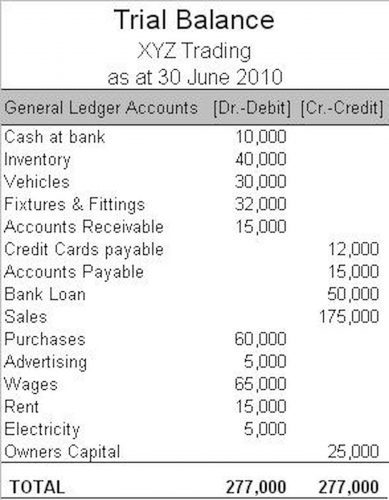
Common examples include rent expense for office space, utility expense for electricity and water, or salaries expense paid to employees. Businesses often incur employer payroll taxes, which are also recognized as expenses. Expenses are reported on a company’s income statement and represent the costs of running the business during a specific accounting period. These costs are subtracted from the business’s revenue to calculate net income, which is a key indicator of the company’s performance. By accurately tracking expenses, business owners have a clearer picture of their profitability and efficiency.
Current liabilities

Companies must pay a portion of Social Security and Medicare taxes on every individual the business employs. Companies recognize the expense when they owe workers money and remove payroll tax liabilities when the business pays government tax authorities. For example, if you purchase materials from a supplier, you may not have to pay straight away but payment will still be expected soon. Accrued expenses, on the other hand, are ongoing costs accumulated over time and need to be recognized within each accounting period. While both represent liabilities your company owes, they differ in terms of timing, recognition, and cash flow impact. The amount owed will be recorded as accounts payable in your books.
- It provides a clear distinction between liabilities and expenses.
- That way, you can prepare for the larger lump-sum payments that may arise at the end of the accouting period.
- The higher your liabilities, the bigger risk you are to the creditor.
- Liabilities get a special position in the balance sheet as well as in the financial statement.
- Valerie joined our team in 2023 and brings with her nearly 30 years of administrative support and a wealth of sales and marketing experience.
- It is important for companies to manage their operating expenses in order to ensure profit maximization.
Processing

Some may shy away from liabilities while others take advantage of the growth it offers by undertaking debt to bridge the gap from one level of production to another. Here are some of the use cases you may run into when understanding the uses of assets and liabilities. Below we’ll cover their basic definitions and functions, how they factor into the balance sheet and provide unearned revenue some formulas and examples to help you put them into practice. Expenses are typically recurring payments that are necessary to run a business. These are ongoing costs necessary for the day-to-day functioning of a business. Examples include rent, utilities, salaries, and office supplies.
Payable
- Effective management of accounts payable helps businesses manage liquidity.
- However, some expenses may be non-recurring or extraordinary, such as legal settlements or restructuring charges, which are not expected to occur regularly.
- Understanding how liabilities and expenses affect financial statements is crucial for accurate reporting.
- She earned her Master’s in Accounting from Kent State University and has built a career centered on providing reliable and thoughtful support to her clients.
- This Accounts Payable entry signifies the company’s obligation to the utility provider.
- Dawn is also an Enrolled Agent (EA), which allows her to better serve clients by representing them before the IRS.
- Also known as the Profit and Loss report, this report subtracts expenses from revenue to determine the net profit of a business.
You can use software to reconcile the payroll liability data and ensure you’re processing payroll correctly. This accounting method does not post expenses based on cash inflows and outflows, referred to as the cash basis method of accounting. As your business grows, you may offer benefit plans to motivate employees. Workers can choose to voluntarily withhold payroll dollars to fund benefit plans. Note that no taxes are withheld on compensation paid to independent contractors.


This is later adjusted to the exact amount when the invoice has been received. Both expense and liability result in cash outflows and are well-known to be similar. We often overlook the differences between costs and liabilities. Every business that is operational and currently in operation has assets and liabilities.
What is accounts payable?
Both https://beibicemerlang.com/index.php/2021/05/06/how-to-identify-and-correct-bookkeeping-cleanup/ of these mean that a business needs to pay its supplier, but each happens at different times and in different ways. Accrued expenses mean when a company uses something, like its materials, but hasn’t gotten a bill yet. Because contingent liabilities are recorded depending on future events, they look more like potential liabilities. All long-standing liabilities due in the forthcoming are more than one year out. Short-term loans include personal lines of credit that must be paid off within 12 months, bank overdrafts, and trade credits.
- Other examples of current liabilities include wages payable, dividends payable, interest payable and unearned revenues—money received in advance for services yet to be completed.
- Keep up with Michelle’s CPA career — and ultramarathoning endeavors — on LinkedIn.
- Contact us to learn more about how we can help your business process payroll in accordance with the law, retain employees and continue operating efficiently.
- Moreover, it reduces instances of disputes which can arise if payments are delayed or employees are not paid correctly according to their contracts.
- On a balance sheet, these two categories are listed separately but added together under “total liabilities” at the bottom.
- Unpack the fundamental distinctions between crucial financial components.
- Workers can choose to voluntarily withhold payroll dollars to fund benefit plans.
- CapEx appears on the balance sheet, while regular expenses affect the income expenses.
- Payroll is one of the most time-consuming accounting tasks—and you need the right tools to work efficiently.
- Liabilities, while not directly reducing equity in the same way, impact equity indirectly as they represent claims against a company’s assets that must eventually be settled.
- A company’s assets are also grouped according to their life span and liquidity – the speed at which they can be converted into cash.
While both AP and accrued expenses can be short-term debts, AP difference between expenses and liabilities is due within a defined period specified on an invoice, such as 30, 45, 60, or 90 days. These expenses are often linked to ongoing costs your business needs to account for consistently, such as salaries, taxes, and interest on business loans. Both are liabilities, which means they represent money your business owes.


Leave a Reply